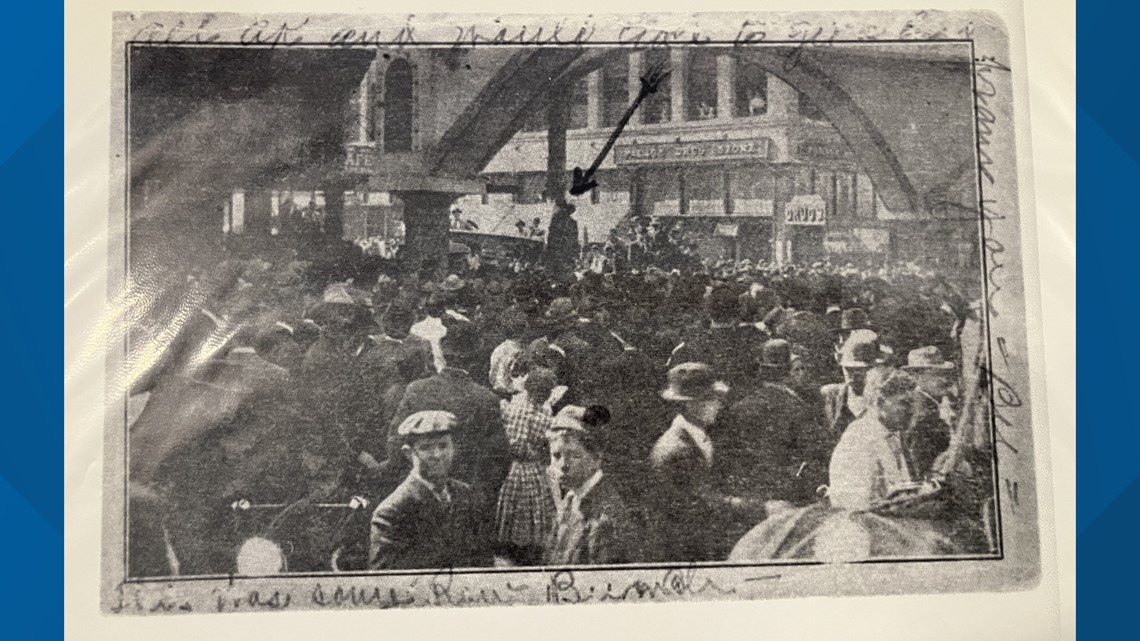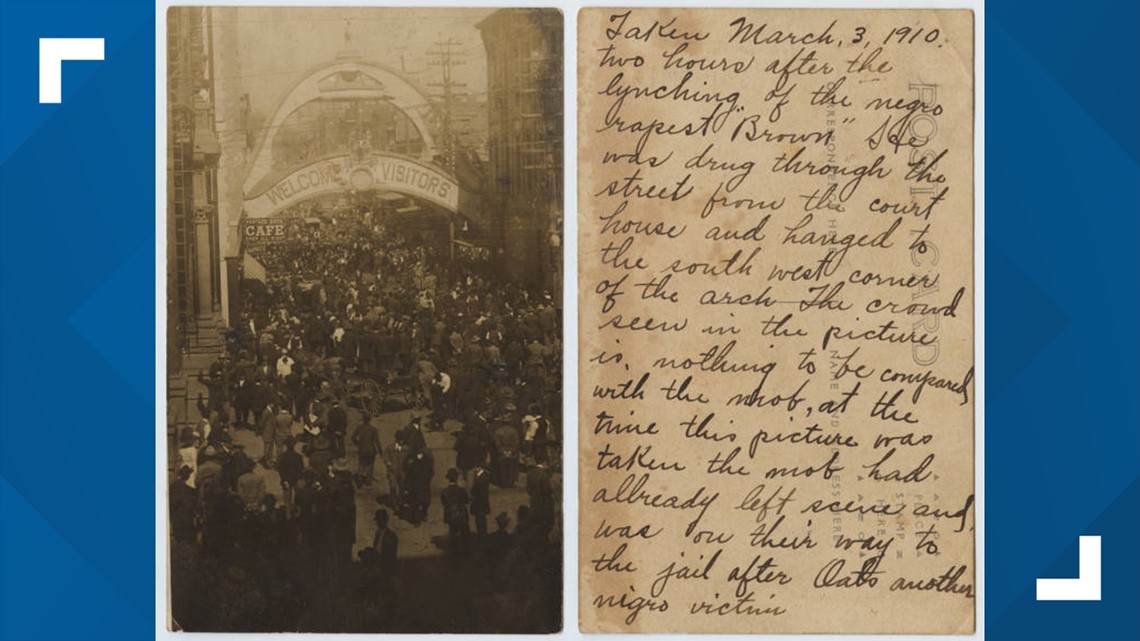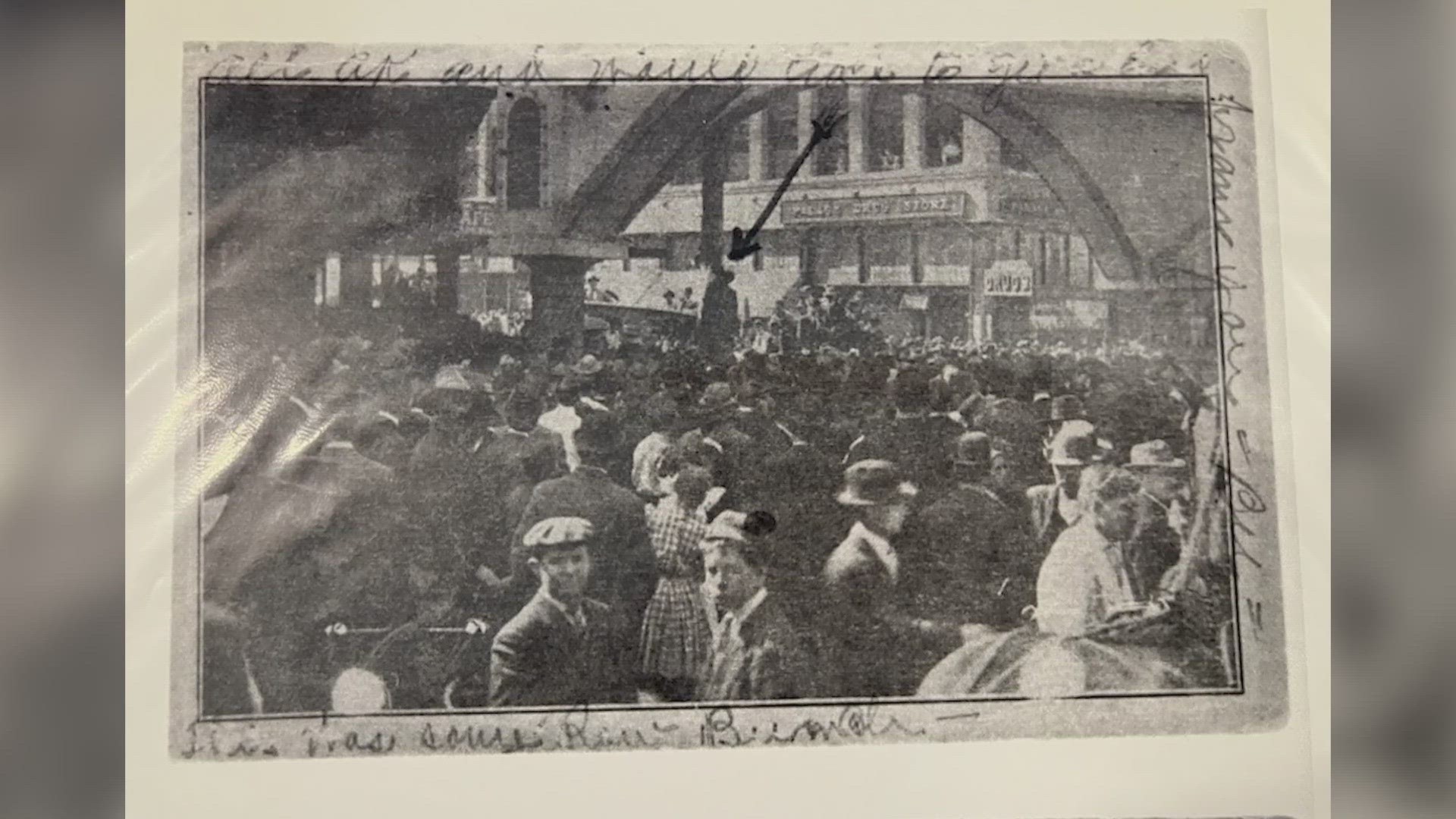DALLAS — Warning: This story contains graphic images.
Main and Akard Streets are in the heart of Dallas. The streets bustle with people and businesses daily, but that normalcy is clouded by another.
“Generations today have to know what happened when they walk around in downtown Dallas," said Rick Halperin, SMU Human Rights Program Director. "They have to realize it’s a place of death where something terrible in this city happened,”
Halperin has been teaching human rights courses since 1990. Each year, he tells his students the story of Allen Brooks. He was a Black man accused of raping a white girl in 1910 and later lynched by a mob.
“And was dragged, literally through the old red courthouse in Downtown Dallas," Halperin said. "Then, thrown out of the second story of that building and still by all accounts, barely alive."
The mob dragged Brooks to Main and Akard where they hanged him from what was then Elks' Arch in front of thousands of people.
“This would be the equivalent back in 1910 of bringing incoming class of SMU, several thousands of people clammed into downtown to witness the lynching of Mr. Brooks,” said Halperin. “We can all be appalled looking back on such barbarism in our city and around the country, but in those years, dare I say, it was a norm.”
What was also normal was postcards made of the lynching. SMU has copies of postcards showing Brooks’ lynching that was sent to others nationwide.


SMU also has the only known copy of a second postcard showing just two hours after Brooks’ murder.
The back of that postcard reads, “Taken March 3, 1910 two hours after the lynching of the negro rapist 'Brown'. He was drug through the street from the courthouse and hanged to the southwest corner of the arch. The crowd seen in the picture is nothing to be compared with the mob, at the time this picture was taken the mob had already left scene and was on their way to the jail after Oats another negro victim.”


“This was done with total impunity," Halperin said. "No arrests. No trials. No convictions. No nothing.”
There are also many other postcards taken from other lynchings across the country. Halperin showed WFAA a book with photos of those cards.
“Photo after photo of what was happening in this country in the name of the law…No horror is expressed in these postcards. Nobody is writing how they were appalled, shocked, nauseated. It’s just a mocking. Here’s a barbeque. Here’s what happened,” said Halperin. “What does that say about who we once were?”
For many like Halperin, they also ask what it says for who we have yet to become.
“The names change, George Floyd. We know of that because somebody caught it on a cell phone. Rodney King, somebody caught it on a video camera…Nobody should be surprised that we still are having racially-motivated acts of violence against African Americans and others, Asians, women. Other groups are targets of hate. Hate is on the increase,” said Halperin. “The most dangerous phrase in any language when it comes to something like this is ‘I didn’t know’ or ‘I don’t care’ because how can any society get better if they don’t care about these kinds of horrific mistakes.”
That is why Halperin said it is important for everyone to remember.
“We have to face this pain, admit wrongdoing, apologize for it, so that hopefully, we don’t have these kinds of acts in our present,” said Halperin.
It is present with new norms and remnants of a painful past.

